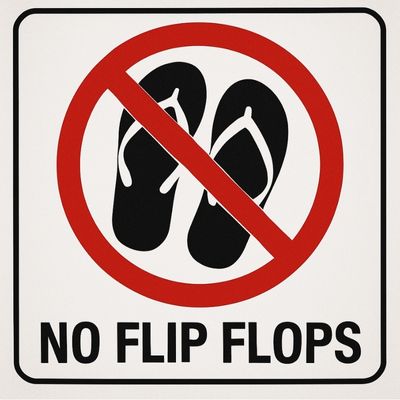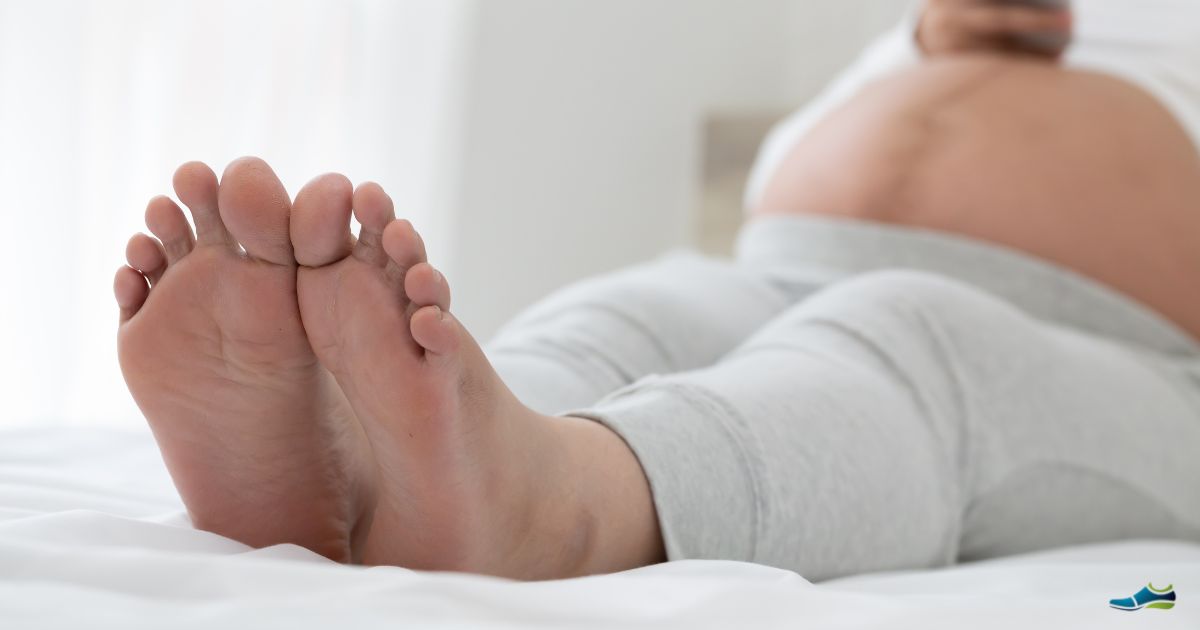Pregnancy transforms your body in remarkable ways, and your feet are no exception. As your bump grows, you may start noticing swelling, soreness, and even a change in shoe size.
These changes are common, but they can cause serious discomfort if your footwear isn’t changed accordingly.
That’s why choosing the right shoes—specifically wide fit shoes—can make all the difference in your comfort and mobility throughout pregnancy.
The best shoes for pregnant women with swollen feet (oedema) don’t have to be frumpy, there are plenty of lovely styles available nowadays. (I have a dedicated post about oedema that you can read)
In this guide, we’ll explore why foot changes happen, what features to look for in pregnancy shoes, and how to shop wisely as your needs evolve.
Feeling unheard? Our bold take on Wide Fit Shoes for Pregnancy tells it like it is.
Top Features to Look For in Maternity Footwear
Wide fit shoes are a great starting point, but there are a few more features that can dramatically boost comfort and support:
- Adjustable design: Velcro straps, elastic panels, or laces allow you to adapt the fit as your feet change daily.
- Good arch support: Pregnancy can flatten your arches, so look for shoes with built-in orthotic support or add supportive insoles.
- Cushioned footbed: Soft, shock-absorbing materials protect your heels and reduce foot fatigue.
- Non-slip soles: Grippy outsoles provide extra traction—important if you feel unsteady or are navigating slippery surfaces.
- Breathable uppers: Materials like mesh or soft leather help manage heat and sweat during warmer months.
Best Shoe Styles for Pregnant Feet
Some styles naturally lend themselves to the wide fit, comfort-first approach. Consider these types for different scenarios:
- Wide fit trainers: Great for walking and errands; look for padded heels and arch support.
- Supportive sandals: Ideal for warmer weather with open design and adjustable straps.
- Roomy slippers: Soft-soled options for indoors with memory foam and easy entry.
- Stretchable flats: Ballet flats with elastic edging can expand with your foot.
- Low-heeled boots: Opt for ankle or mid-rise boots with wide fittings and zippers for ease.
Why Wide Fit Shoes Are Ideal for Pregnancy
Wide fit shoes provide additional space across the toe box and forefoot, giving your feet room to breathe and expand naturally. During pregnancy, this isn’t just a matter of comfort—it’s about supporting the structural changes your body is going through. Shoes that are too tight can lead to blisters, bunions, or increased arch strain, all of which are harder to manage when you’re already feeling physically taxed.
- Alleviate pressure: Wide fit shoes reduce pressure points caused by swelling or changes in foot shape.
- Improve stability: A wider base can improve your balance and reduce the risk of falls—a common concern as your centre of gravity shifts.
- Prevent foot fatigue: More space means less friction and irritation, especially on long walks or when standing for extended periods.
Why Do Feet Change During Pregnancy?
Several physiological changes affect the feet during pregnancy. As your baby develops, your body releases hormones (especially relaxin) to loosen the ligaments in your pelvis. Unfortunately, these hormones don’t discriminate—they also affect ligaments in your feet, causing the arches to flatten and your foot to spread. In addition, the extra weight puts increased pressure on your feet, while water retention (or oedema) often causes swelling in the ankles and toes. Together, these changes can leave you struggling to squeeze into your regular shoes.
When Should You Start Wearing Wide Fit Shoes?
Every woman’s pregnancy timeline is different, but foot swelling and discomfort commonly begin in the second trimester. Trimesters are explained by following this link
If your current shoes feel tight by mid-afternoon, leave marks, or cause you to trip, it’s a sign to make the switch. Don’t wait until discomfort sets in—having a reliable pair of wide fit shoes early can make a big difference in preventing long-term foot issues.
How to Size Your Feet During Pregnancy
It’s not unusual to go up half a shoe size—or more—during pregnancy. Here’s how to keep your sizing accurate:
- Measure your feet at the end of the day, when swelling peaks.
- Use a soft tape to measure the widest part of your foot and compare it to a shoe width chart.
- Try shoes on with the socks or hosiery you intend to wear most often.
- If one foot is larger, size to the bigger one.
Post-Pregnancy Footwear Tips
Some women return to their pre-pregnancy shoe size—but many don’t. Even if your swelling subsides, hormonal changes and ligament stretch may result in a permanently wider or flatter foot. Stick with supportive, roomy shoes for a few months after you’ve had your baby while your body recovers. This will also help if you’re dealing with foot fatigue from carrying your baby or being on your feet more often than before.
Conclusion
Pregnancy places a lot of demands on your body—and your feet carry much of that load. Investing in a pair of wide fit shoes isn’t just about short-term comfort. It’s about supporting your feet as they adapt to major changes, helping you move more easily, and reducing your risk of foot pain, falls, or long-term discomfort. Whether you’re heading to work, chasing toddlers, or putting your feet up, wide fit shoes can help you take each step with confidence and ease. Remember the best wide fit shoes for pregnant women aren’t necessarily dowdy.
A special note from Sue
When I had my first child, I was kept in hospital for 22 weeks and the only footwear that went anywhere near my elephant like feet, were some oversized flip flops. My sister brought them in for me out of sheer desperation, they were not supportive at all and my feet resembled proven dough. Years later, now with several foot issues, I wonder if I have contributed to the problems. To this end, I seriously encourage all pregnant women with swollen feet to prepare for the day when nothing will fit and only wear flip flops if you honestly have nothing else.

Frequently Asked Questions
Q: Do feet always get bigger during pregnancy?
A: Not always, but it’s common due to weight gain, swelling, and hormone-related ligament changes.
Q: Should I go up a full shoe size?
A: Most women only need to go up half a size and switch to a wide fit, but it varies—measure before you buy.
Q: What if I already have flat feet?
A: Flat feet may worsen in pregnancy. Look for wide fit shoes with arch support or custom orthotic inserts.
Q: Are wide fit shoes enough on their own?
A: They help a lot, but proper cushioning, arch support, and grippy soles are also essential for all-day comfort.
Q: Can I keep wearing wide shoes after giving birth?
A: Absolutely. Many women continue wearing them long-term if their foot shape stays wider or flatter.

